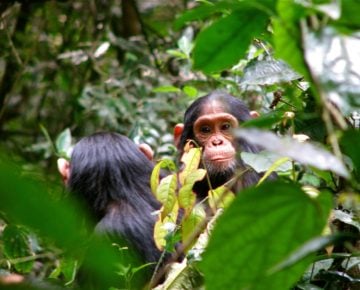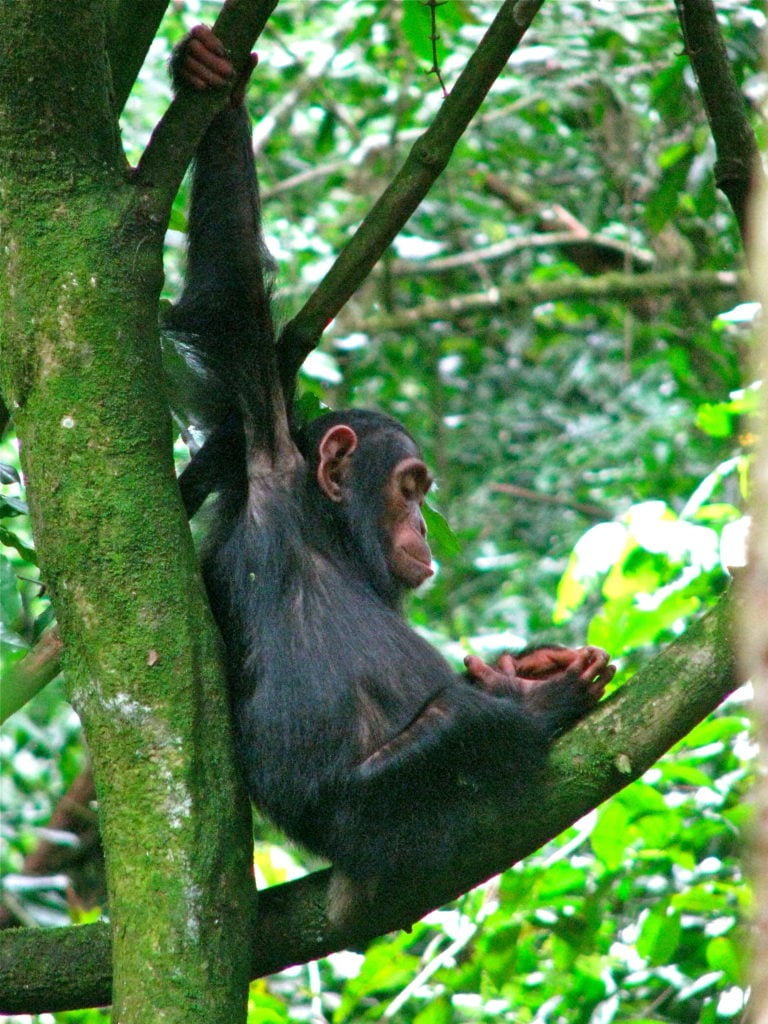Iulia Badescu was awarded a Leakey Foundation Research Grant during our spring 2015 cycle for her project entitled “Investigating the infant nutritional development of wild chimpanzees.” She was recently published in the American Journal of Physical Anthropology, and she was kind enough to summarize the article for our Leakey Foundation Blog.

Iulia Badescu
Humans vary considerably in our strategies of infant feeding. For example, the optimal ages at which infants ought to be completely weaned or begin consuming solid foods are regularly questioned by researchers and in the media. To better understand the evolutionary contexts under which our diverse strategies of infant feeding evolved, we can look to nonhuman primates. Understanding the diets and feeding patterns of nonhuman primate infants will help us establish early life history parameters in our hominin ancestors, which can shed light on the diversity of contemporary infant feeding practiced between and within human populations.
In wild primates, it is difficult to precisely measure what infants are eating. A major challenge in quantifying infant diets and in identifying the timing of feeding transitions comes from our inability to know from observations alone whether infants are actually drinking maternal milk when they make nipple contacts, and to distinguish between mouthing and ingesting of vegetation. We assessed observational limitations by using a novel fecal stable isotope approach to physiologically determine the timing of age-related feeding transitions and to measure the relative contributions of maternal milk to adult foods in the diets of wild chimpanzee infants at Ngogo, Kibale National Park, Uganda.

We reported several key findings of using fecal stable isotopes to track the diets of chimpanzee infants. First, we discovered the presence of comfort nursing in chimpanzees. Most of our older study subjects (between 4 and 7 years old) were weaned individuals that were observed to continue making nipple contacts regularly, presumably for comfort rather than nutrition. Second, we found that the weaning process for chimpanzees at Ngogo started when infants were around 1 year old, after which there was a gradual decrease in reliance on maternal milk. The weaning process was complete when infants were between 4 and 4.5 years old, which is in line with reports of weaning established through observations at other chimpanzee sites. Due to comfort nursing, however, had we relied solely on our observations of nursing behavior, our estimates of the average age at which infants were weaned would have been a few years higher; this suggests that fecal stable isotopes can be used to provide a more accurate and biologically meaningful assessment of weaning.

There is a lot of research that should be done with infant chimpanzees, and we are grateful to the Leakey Foundation and other agencies for funding our work at Ngogo. While the results of this study allowed us to build a more precise model in the age ranges of key feeding transitions in wild chimpanzees, further studies are needed to measure population level averages. We thus plan to continue assessing infant feeding at Ngogo using a stable isotope method. In addition, we will use this method to evaluate differences in maternal investment strategies across mother-offspring pairs, which can allow us to answer questions about fitness and reproductive success.
Click here to read the full article.








Comments 0